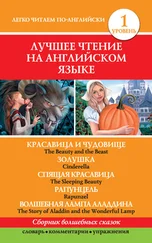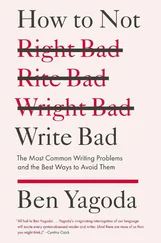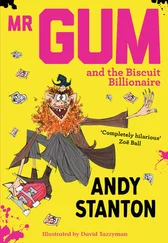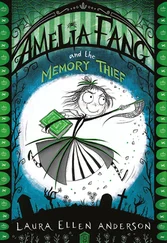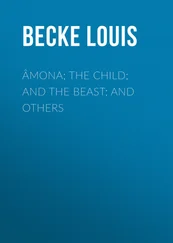Russia’s defeat in this war (1904–05) further undermined the authority of the already unstable regime.
Volna , first published in March 1906.
A play by the Austrian writer Arthur Schnitzler.
A radical satirical journal produced by the journalist Nikolai Shebuev in 1905–06. The back page of the first issue carried a photograph of the Tsar’s “October Manifesto” with a bloody handprint across it and the caption “Major General Trepov had a hand in this document”. Trepov had played an important role in the suppression of the many strikes and rebellions that swept Russia in 1905. Only five issues of the journal were printed. Shebuev was arrested and sentenced to a year’s imprisonment.
Wheatfield ( Niva ) was an illustrated weekly journal. It presented a wide selection of good quality literature to a broad readership.
The word “bison” ( zubr ) came to be used to refer to reactionary members of the Duma (the Russian parliament) drawn from the landowning classes. The nickname hints at an analogy between the official protection afforded such figures and the conservation of “endangered species” close to extinction. (With thanks to Boris Dralyuk for help with this note.
Konstantin Platonov, son of Senator S.F. Platonov.
The Russian Social Democratic Party was a revolutionary socialist party formed in 1898. In 1903 it split into two factions: the Bolsheviks (led by Lenin) and the Mensheviks.
“One Step Forward, Two Steps Back (The Crisis in our Party)”, was published in Geneva in 1904.
After a period of internal exile in Russia, Lenin had left for Geneva in 1900. At the time Switzerland was something of a hotbed of radicalism—a number of Russian revolutionaries studied at the universities of Geneva and Zurich.
Stock Exchange Gazette ( Birzhevye vedemosti ) was a liberal St Petersburg paper to which Teffi was a regular contributor. In 1917 it was closed by the Bolsheviks.
This plan by the mayor of St Petersburg, P. Lelyanov, to fill in the Catherine Canal (Yekaterinsky Canal, now the Griboyedov Canal) was never put into effect.
In his introduction to Marx’s The Class Struggle in France (1895), Engels describes barricade battles and armed insurrections as “obsolete” and all too likely to end in failure.
New Life ( Novaya Zhizn’ ), the first legal Bolshevik newspaper, was published in St Petersburg from 27th October until 3rd December 1905.
The tsarist security service, the Okhrana, made extensive use of secret agents, both to gather information and to subvert revolutionary groups from within.
A Russian Orthodox workers’ organization. In January 1905 a peaceful workers’ demonstration led by Father Gapon ended with the Imperial Guard firing on demonstrators, killing about 200 people and wounding about 800. The day went down in history as “Bloody Sunday”.
Life Questions ( Voprosy Zhizni ) a literary and philosophical journal.
Linyov worked on Stock Exchange Gazette between 1893 and 1896; this episode thus appears to have taken place before Teffi’s involvement with New Life. Gorky, however, only moved to St Petersburg in 1899. Teffi’s account may be inaccurate.
To start a newspaper, one required official permission from the Ministry of the Interior.
Clearly Minsky’s poem had some success. There is at least one account of an educated person being convinced that it was Minsky, rather than Marx, who first came up with the phrase “Workers of the World Unite” (Korney Chukovsky, diary entry for 13th September 1927, in Dnevnik 1901–1929 by Korney Chukovsky (Moscow: Sovremenny pisatel, 1997), pp. 413–4).
The title of the original is “Plehve and his Chaff” (“ Pleve i ego pleveli ”). Viacheslav von Plehve (1846–1904), Russian Minister of the Interior, was assassinated in 1904 in St Petersburg by a terrorist bomb.
As Governor of St Petersburg, Trepov played an important part in suppressing the 1905 Revolution. See “ New Life ”, note 4.
A strike by railway workers, one of the many rebellions and strikes that swept the country in 1905.
An anonymous popular song from the time of the French revolution, a rallying cry for revolutionaries.
Any activities considered subversive, including publishing inflammatory political material, could lead to a spell of internal exile. Those found guilty of serious crimes were sent to Siberia; being sent to a provincial town like Oryol was a lesser punishment.
Misquoted from a poem by Nikolai Nekrasov, “The Forgotten Village” (1864). This describes peasants waiting in vain for the master to come and sort out their problems.
Sonia Marmeladova: the young heroine of Crime and Punishment , who sacrifices her honour by becoming a prostitute to save her family. Sonia’s appearance in the novel is described as follows: “…strange was her sudden appearance in this room, amidst the beggary, rags, death and despair. She too wore rags; her get-up was cheap, but it came with all the adornments of the street, as the rules and etiquette of that special world demanded, with its shamingly flagrant purpose. […] She’d quite forgotten about her fourth-hand, colourful silk dress, utterly out of place here with its ridiculously long train, and about her enormous crinoline obstructing the doorway, and her bright shoes and her parasol, which she’d taken with her even though it was night, and the ridiculous round straw hat with a feather the colour of fire.” (Dostoevsky, Crime and Punishment , tr. Oliver Ready (London: Penguin Classics, 2014).) Teffi’s implication is that the girl with Gusev is also a prostitute.
A reference to a pamphlet by Lenin. See “New Life”, note 9.
An ultra-nationalist Russian movement that supported the tsarist principles of Orthodoxy, Autocracy and nationality and was fiercely hostile to both revolutionaries and Jews. Its members were drawn from a variety of social classes.
“The Union of the Russian People”, one of the Black Hundred groups, met regularly at the Tver café in St Petersburg, offering free tea and food to unemployed workers.
The term “pogrom” was most often used of mass acts of violence against Jews. Jews and revolutionaries, however, were often conflated, especially in the minds of the Black Hundreds and other extreme nationalists.
The article in question, “The Dying Autocracy and the New Organs of Party Rule”, was published in November 1905. Minsky was arrested and released on bail.
Russian external passports of this period included several pages intended for foreign border guards. Written in French, German and English, these stated the traveller’s name and social class. (With thanks to Yevgeny Slivkin.)
Читать дальше

